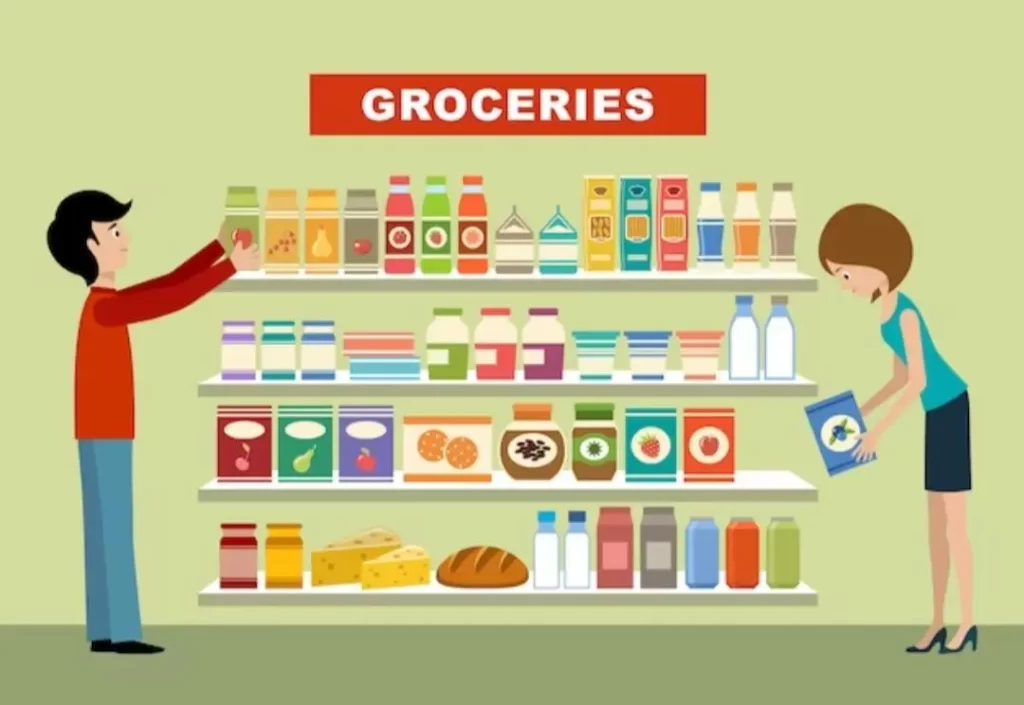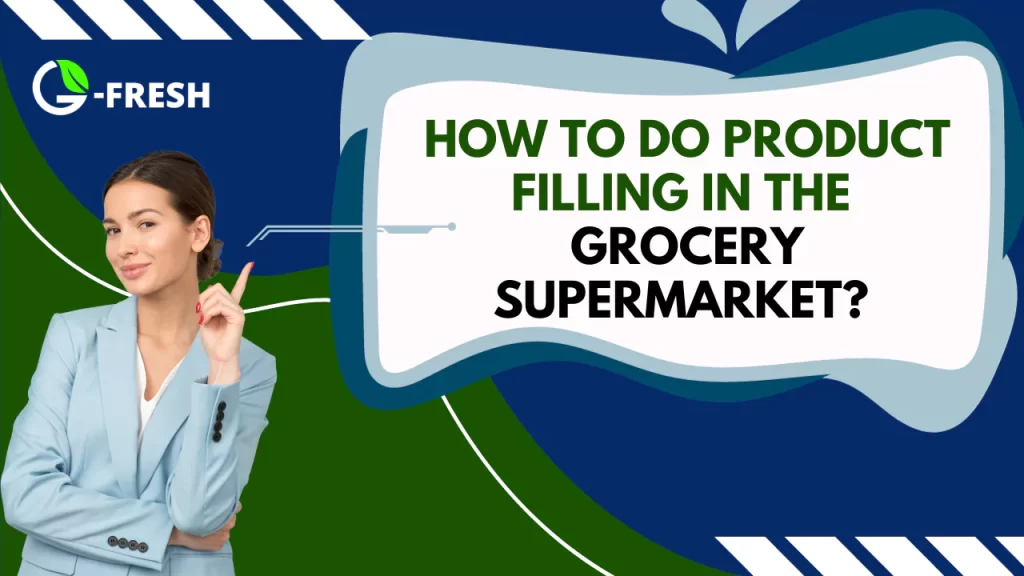How to do product filling in the grocery supermarket
Grocery Supermarket
I. Why product filling is the most important task in a grocery supermarket?

Here are some reasons why product filling is essential for a grocery franchise and why it should be your top priority:
- Customer Satisfaction: When the shelves are stocked, customers can quickly discover what they need. Happy clients frequently revisit.
- Sales Boost: More items can be sold due to stocked shelves. This helps the business grow its sales and earnings.
- Freshness: Having ample stock guarantees that fresh things are always available, as no one likes stale items.
- Competitive Benefits: Supermarkets with regularly stocked shelves stand out and outperform their competitors.
II. How to find which products are most popular in your area?

The success of your business depends on finding the top-selling items in your neighborhood. Here is a quick brief on how to accomplish it:
1. Study consumer behavior: Pay attention to the products that people buy the most regularly. Talk to them to learn about their preferences.
2. Analyze sales details: Examine your sales data. What products are the most popular? These statistics give important hints.
3. Rival research: Look at the products that your rivals are selling well. It may reveal details about regional preferences.
4. Surveys and suggestions: Inquire about the likes and dislikes of your customers. Feedback forms and surveys can provide insightful data.
5. Social Media Insights: Keep an eye on social media sites to discover what people are chatting about or praising.
III. Where to get products for your grocery supermarket?
Buying products for your grocery store franchise is essential. You can guarantee a well-stocked grocery supermarket with a wide selection of goods to fulfill your consumers’ needs by diversifying your suppliers. Here is a quick guide to assist you:
- Wholesale Vendors: Let’s start with wholesale vendors. They provide a variety of goods at affordable prices. Identify regional and international wholesalers.
- Local Farms and Producers: Get in touch with nearby farms and producers for fresh vegetables and distinctive goods. This offers fresh, high-quality food and supports your community.
- Distributors: Some goods, such as drinks and snacks, are frequently obtained through suppliers who carry a variety of brands.
- Online Marketplaces: Research foreign or specialty goods marketplaces online. They provide access to a wide range of conveniences.
IV. Things you should know before buying products from a retailer
There are a few important things you should be mindful of before purchasing goods from a retailer:
1. Compare Prices: Verify the cost at several merchants. The same item may occasionally be cheaper at a different retailer.
2. Return Policy: Recognize the return policy of the retailer. This is useful if you decide to change your mind if the product fails.
3. Check Quality: Check the product’s level of excellence. Before you buy it, check for any damage or faults.
4. Product Warranty Details: If the item has a warranty, find out what it covers and how long it lasts.
5. Payment Options: Discover which options the retailer allows. Some people might only accept cash or particular credit cards.
V. How to get discounts or offers while purchasing products?

Getting discounts and special offers while purchasing things can help you save money. Here’s a little guide on how to manage it:
- Newsletter Subscriptions: Sign up for emails from your favorite stores. Subscribers are frequently sent exceptional deals.
- Use coupons: Search for coupons in newspapers, online, or through special coupon websites. Discounts on numerous products are frequently available.
- Loyalty Programs: Participate in retailer loyalty programs. They offer discounts, credits, or cashback to frequent shoppers.
- Shop During Sales: Watch for sales events such as Black Friday or seasonal clearing. Prices fall dramatically during this period.
- Bundle Deals: Some stores give discounts when you purchase many things at the same time. Look for bundle deals that meet your requirements.
- Request Discounts: Do not be afraid to ask the store if they have any current promotions or discounts.
VI. How to do product display in the grocery supermarket?

Improving product placement in your grocery supermarket is important. Here’s a detailed guide:
1. Get to Know Your Aisles: Arrange products rationally so that customers may simply locate what they’re looking for. Put dairy items together, for example.
2. Eye-Level Is Important: Products at eye level are the first to be noticed. Keep popular and profitable items in this section.
3. Plan End Caps: End caps (the ends of aisles) can be used for promotions or seasonal items. They pique the interest of shoppers.
4. Perishables and fresh items: Store perishables and fresh things near the entryway. This motivates buyers to investigate more.
6. Regular Checks: Check for vacant spaces or cluttered shelves on a regular basis. Restock as soon as possible to keep everything looking full.
7. Customer reviews: Pay attention to comments from customers and alter positioning based on their preferences.
Conclusion
In conclusion, developing the art of product filling in your grocery store franchise is a must for both consumer happiness and the profitability of your business. You create a shopping atmosphere that customers want to return to by maintaining well-stocked and orderly shelves. Customer satisfaction leads to increased sales and a flourishing supermarket. Remember to pay attention to client behaviors, evaluate sales statistics, and maintain contact with local producers and suppliers.
Frequently Asked Questions and Answers:
Q1: How frequently should I refill the shelves in my grocery supermarket?
A1: It is determined by client traffic and the products sold. In general, high-demand commodities may require daily replenishment, while others may not.
Q2: What if I can’t find fresh vegetable dealers in my area?
A2: Consider contacting regional vendors who can deliver fruit and vegetables even if local options are limited.
Q3: How should I manage products with short expiration dates?
A3: Use the “first in, first out” (FIFO) strategy to ensure that older items are sold before fresh ones in order to reduce waste.
Q4: What if I’m uncertain about local customer preferences?
A4: Conduct surveys or personally question clients about their preferences, and then adjust your product filling strategy accordingly.
ALSO READ : Discuss creative ways supermarkets are displaying and selling products.
